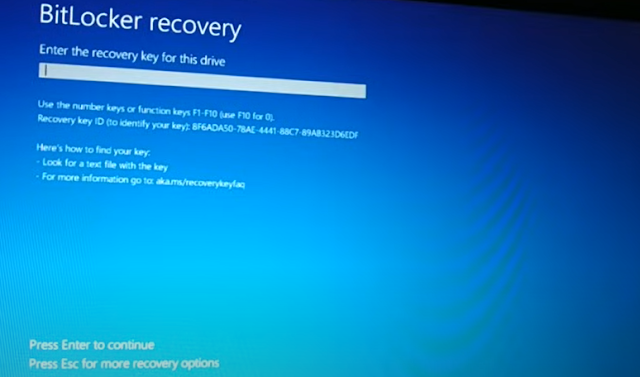Forgot bit locker pin, forgot bit locker recovery key, 5 Easy ways to fix


The **Python `datetime` module** provides classes for manipulating dates and times in both simple and complex ways. It allows you to work with date and time objects, extract parts of them, perform arithmetic operations, and format them in various ways.
### Key Concepts:
1. **Getting
the Current Date and Time**
2.
**Creating `datetime` Objects**
3.
**Extracting Date and Time Components**
4.
**Formatting Dates and Times (`strftime`)**
5. **Parsing
Strings into `datetime` Objects (`strptime`)**
6.
**Performing Arithmetic on Dates**
7. **Working
with Time Zones**
8.
**`timedelta` for Time Differences**
9. **Other
Classes: `date`, `time`, `timedelta`**
### 1.
**Getting the Current Date and Time**
To get the
current date and time, you can use the `datetime.now()` method from the
`datetime` module.
####
Example:
```python
from datetime import datetime
# Get the
current date and time
current_time
= datetime.now()
print(current_time)
# Output:
2024-09-10 10:35:00.123456
```
### 2.
**Creating `datetime` Objects**
You can
create `datetime` objects by specifying the year, month, day, hour, minute,
second, and microsecond.
####
Example:
```python
from datetime
import datetime
# Create a
specific datetime
dt =
datetime(2024, 9, 10, 14, 30, 45) #
(year, month, day, hour, minute, second)
print(dt)
# Output:
2024-09-10 14:30:45
```
### 3.
**Extracting Date and Time Components**
You can
extract individual components like the year, month, day, hour, minute, and second
from a `datetime` object.
####
Example:
```python
from datetime
import datetime
current_time
= datetime.now()
# Extract
components
print(f"Year:
{current_time.year}")
print(f"Month:
{current_time.month}")
print(f"Day:
{current_time.day}")
print(f"Hour:
{current_time.hour}")
print(f"Minute:
{current_time.minute}")
print(f"Second:
{current_time.second}")
# Output:
# Year: 2024
# Month: 9
# Day: 10
# Hour: 14
# Minute: 35
# Second: 0
```
### 4.
**Formatting Dates and Times (`strftime`)**
You can
format `datetime` objects as strings using the `strftime()` method, which
allows you to control how the date and time are represented.
####
Example:
```python
from
datetime import datetime
current_time
= datetime.now()
# Format the
date and time
formatted_time
= current_time.strftime("%Y-%m-%d %H:%M:%S")
print(formatted_time)
# Output:
2024-09-10 14:35:00
```
Common
format codes:
- `%Y`: Year
(e.g., 2024)
- `%m`:
Month (01-12)
- `%d`: Day
of the month (01-31)
- `%H`: Hour
(00-23)
- `%M`:
Minute (00-59)
- `%S`:
Second (00-59)
### 5.
**Parsing Strings into `datetime` Objects (`strptime`)**
You can
convert a string representation of a date and time into a `datetime` object
using the `strptime()` method.
####
Example:
```python
from
datetime import datetime
# Parse a
date string into a datetime object
date_string
= "2024-09-10 14:35:00"
parsed_date
= datetime.strptime(date_string, "%Y-%m-%d %H:%M:%S")
print(parsed_date)
# Output:
2024-09-10 14:35:00
```
### 6.
**Performing Arithmetic on Dates**
You can
perform date and time arithmetic by using `timedelta` objects. This allows you
to add or subtract time intervals like days, hours, or weeks from `datetime`
objects.
####
Example:
```python
from datetime
import datetime, timedelta
current_time
= datetime.now()
# Add 7 days
to the current date
new_time =
current_time + timedelta(days=7)
print(new_time)
# Subtract 2
hours
new_time =
current_time - timedelta(hours=2)
print(new_time)
```
### 7.
**Working with Time Zones**
The
`datetime` module provides limited time zone functionality through the
`timezone` class, but for advanced time zone handling, it’s recommended to use the
third-party `pytz` library.
#### Example
(basic `timezone` use):
```python
from
datetime import datetime, timezone, timedelta
# Create a
datetime object with UTC timezone
current_time_utc
= datetime.now(timezone.utc)
print(current_time_utc)
# Set a
different time zone
time_zone_offset
= timezone(timedelta(hours=-5)) # For
example, UTC-5
current_time_with_offset
= datetime.now(time_zone_offset)
print(current_time_with_offset)
```
### 8.
**`timedelta` for Time Differences**
The
`timedelta` class represents the difference between two `datetime` objects. You
can use it to find the difference between two dates or times.
####
Example:
```python
from datetime
import datetime, timedelta
# Define two
datetime objects
start_date =
datetime(2024, 9, 1, 10, 30)
end_date =
datetime(2024, 9, 10, 14, 30)
# Calculate
the difference
difference =
end_date - start_date
print(difference)
# Output: 9
days, 4:00:00
# Access
days and seconds from the timedelta object
print(difference.days) # Output: 9
print(difference.seconds) # Output: 14400 (4 hours in seconds)
```
### 9.
**Other Classes in `datetime` Module**
In addition to
`datetime`, the module includes several other important classes:
#### `date`
Class:
The `date`
class handles dates without times (year, month, and day).
####
Example:
```python
from
datetime import date
# Get
today's date
today =
date.today()
print(today)
# Output:
2024-09-10
```
#### `time`
Class:
The `time`
class represents time without a date (hours, minutes, seconds, and microseconds).
####
Example:
```python
from
datetime import time
# Create a
time object
my_time =
time(14, 30, 45)
print(my_time)
# Output:
14:30:45
```
####
`timedelta` Class:
As
discussed, `timedelta` represents the difference between two dates or times.
### Summary:
- The
`datetime` module provides classes for working with dates and times in Python.
- You can
get the current date and time using `datetime.now()`, or create specific
`datetime` objects.
- Extract
date and time components using attributes like `.year`, `.month`, `.day`, etc.
- Use
`strftime()` to format `datetime` objects and `strptime()` to parse strings
into `datetime` objects.
- You can
perform arithmetic with `timedelta` objects to add or subtract time intervals.
- Time zone
handling is basic with `timezone`, but you can use `pytz` for more advanced
time zone support.
The
`datetime` module is essential for handling dates and times in Python, making
it versatile for applications like timestamping, scheduling, and more.